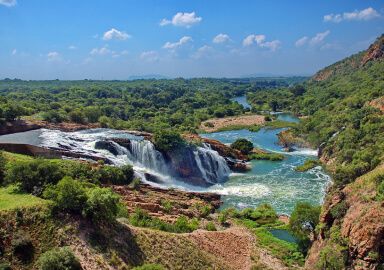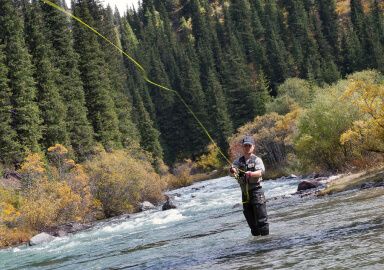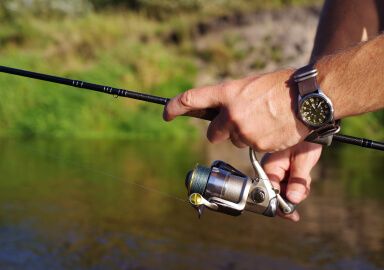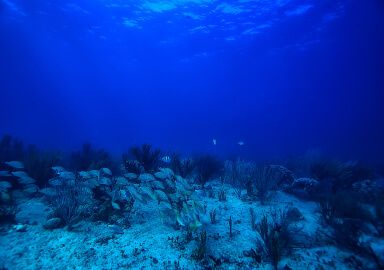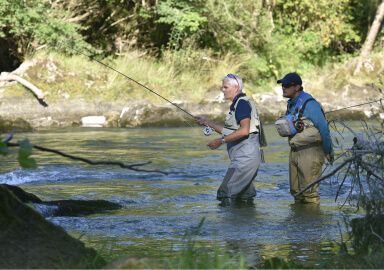Yellowfish
Yellowfish, in recreational angling context, usually refers to several members of the carp family from Africa.
View 9 listings
9
listings
–
price starting from
5
countries
–
to the nearest trip
Where and When?
The largemouth and smallmouth yellowfish are native to the Orange/Vaal River system in southern Africa. The scaly is indigenous to KwaZulu/Natal and the Eastern Cape of South Africa. All inhabit medium to large rivers in their areas, as well as suitable dams. The Sterkfontein and Van der Kloof dams are renowned for their large- and small-mouth yellowfish fishing. Yellowfish are mostly a warm water species, but summer is usually the “wet season” in most of southern Africa and so many rivers are in flood with fast flowing, very turbid water, which makes sport fishing difficult.
The best fishing is in late spring, before the heavy rains, when the levels of the rivers are low, the water is clear and the fish are hungry and starting to move into the shallow areas. The second-best fishing is in mid-winter, during the middle of a warm, sunny day. The fish are sluggish, being deep down and often lying on the bottom, in slow water, however, they can usually be tempted to bite. Big largemouth yellowfish tend to stay near structure in deeper waters where they ambush any suitable prey. Yellowfish hardly feed after dark and the best fishing is usually around midday in winter or early or late in the day in summer.
About Yellowfish
The Labeobarbus genus of fish contains many members, but, while some are small, others, mostly in southern Africa, grow large and are important angling species. All the angling species have a similar torpedo-shaped body and sometimes act “like a carp on steroids”. The mouth is right at the front and has sensitive barbles, but no teeth. The eyes are generally small, the lips are rubbery and the mouths, in some specimens, are very variable.
The largest, the largemouth yellowfish (Labeobarbus kimberleyensis), has a big mouth, is dull gold in colour and can attain 850 cm. (33.5 in.) and over 22 kg. (48.5 lbs). The smallmouth (Labeobarbus aeneus) is often a rich gold colour, can reach 65 cm. (25.5 in.) and 7.8 kg. (17.2 lbs.), while the Natal scaly (Labeobarbus natalensis) is less gold and more silvery, but grows to similar sizes. They all live in freshwater rivers and dams and aggregate in early spring to spawn in shallow, usually fast running, water. They eat a wide variety of foods, mainly invertebrates such as shrimps and molluscs, but also small fish. Mature largemouth are top predators in their areas and eat mostly fish.
How to Catch?
It is only in recent years that sport angling for yellowfish has “taken off” and even ardent trout anglers are converting to yellows. Traditionally they were caught for food using simple baits, like bread or worms and this still works well. It was considered pointless to fly fish or use spinning gear, as it was thought that yellowfish could not be caught this way. Yellowfish are alert, sensitive and easily frightened, but a stealthy approach using light tackle and small flies can achieve good results. Light tackle bait fishing, or even using plastics carefully, can catch good fish but most effort is currently applied to fly fishing.
Smallmouth yellowfish and Natal scalies usually require small flies carefully crafted and presented, while largemouth usually go for much larger and more colourful flies. Medium tackle is best and, as the fish have no real teeth, light tippets may be used. Yellowfish are, however, why you have lots of “backing” on your reel. In large rivers, like the Orange and Tugela, the last thing you need is to hook the yellowfish of a lifetime only to lose it on its first, often incredibly long, strong run. It is bad enough to have to scramble madly downstream over boulders to keep up with a big yellowfish, but having your tackle let you down is the final straw. Yellowfish, especially sport fishing for them, has opened up a whole new and exciting fishing opportunity in areas in which they occur.
